
@jhaudum.bsky.social
Watch thy heart for from it flow all spirits of life. Proverbs.
Sports dietitian of Olympians, pro athletes and others. Sport scientist. Romanistin. Italiano.
Sports dietitian of Olympians, pro athletes and others. Sport scientist. Romanistin. Italiano.
Detecting low iron levels through analysis of tears?
#iron #athletes #anemia
www.mdpi.com/2072-6643/17...
#iron #athletes #anemia
www.mdpi.com/2072-6643/17...
www.mdpi.com
November 9, 2025 at 10:56 AM
Detecting low iron levels through analysis of tears?
#iron #athletes #anemia
www.mdpi.com/2072-6643/17...
#iron #athletes #anemia
www.mdpi.com/2072-6643/17...
Interesting and probably helpful for many…how to communicate numbers.
Imagine talking to your athlete about body comp results or test outcomes… Communication. It makes a difference.
jamanetwork.com/journals/jam...
Imagine talking to your athlete about body comp results or test outcomes… Communication. It makes a difference.
jamanetwork.com/journals/jam...

How to Communicate Medical Numbers
This JAMA Insights provides evidence-based recommendations for communicating numerical information to patients.
jamanetwork.com
October 29, 2025 at 7:38 PM
Interesting and probably helpful for many…how to communicate numbers.
Imagine talking to your athlete about body comp results or test outcomes… Communication. It makes a difference.
jamanetwork.com/journals/jam...
Imagine talking to your athlete about body comp results or test outcomes… Communication. It makes a difference.
jamanetwork.com/journals/jam...
Reposted
Donne e sport, il divario di genere fotografato nella ricerca di Bellutti
Un questionario per Soroptimist condotto dall'ex ciclista su pi...
https://www.gazzetta.it/Sport-Vari/14-10-2025/donne-e-sport-la-ricerca-di-bellutti-sul-divario-di-genere.shtml
Un questionario per Soroptimist condotto dall'ex ciclista su pi...
https://www.gazzetta.it/Sport-Vari/14-10-2025/donne-e-sport-la-ricerca-di-bellutti-sul-divario-di-genere.shtml

October 14, 2025 at 6:20 PM
Donne e sport, il divario di genere fotografato nella ricerca di Bellutti
Un questionario per Soroptimist condotto dall'ex ciclista su pi...
https://www.gazzetta.it/Sport-Vari/14-10-2025/donne-e-sport-la-ricerca-di-bellutti-sul-divario-di-genere.shtml
Un questionario per Soroptimist condotto dall'ex ciclista su pi...
https://www.gazzetta.it/Sport-Vari/14-10-2025/donne-e-sport-la-ricerca-di-bellutti-sul-divario-di-genere.shtml
Menstrual cycle and cognitive performance. Great insights here! When performance is on a high. 😀
www.theguardian.com/society/2025...
www.theguardian.com/society/2025...
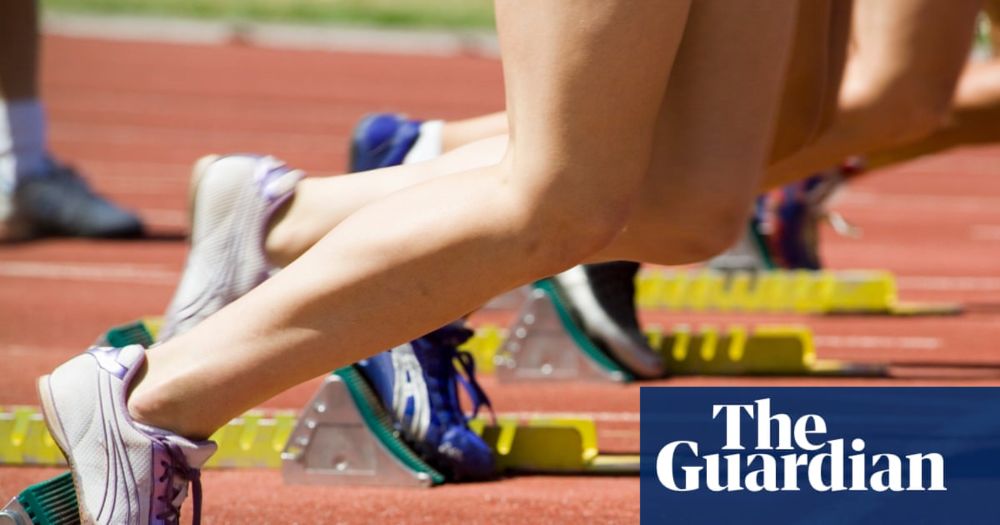
Female athletes have faster reaction times on day they ovulate, study finds
Variation of 80 milliseconds ‘a big difference’ at elite level, while they also make fewer mistakes
www.theguardian.com
October 12, 2025 at 8:05 AM
Menstrual cycle and cognitive performance. Great insights here! When performance is on a high. 😀
www.theguardian.com/society/2025...
www.theguardian.com/society/2025...
Less than 3 meals and night time fasting exceeding 14 h were significantly linked to a heightened risk of developing non-alcoholic fatty liver disease.
nutritionj.biomedcentral.com/articles/10....
nutritionj.biomedcentral.com/articles/10....

Daily eating frequency, nighttime fasting duration, and the risk of non-alcoholic fatty liver disease: a cross-sectional study - Nutrition Journal
Background The understanding of daily eating frequency (DEF) and nighttime fasting duration (NFD) is limited. The aim of this research is to investigate the links between DEF, NFD, and non-alcoholic fatty liver disease (NAFLD). Methods The research involved 11,153 participants from the National Health and Nutrition Examination Survey (NHANES) conducted between 2005 and 2018. The evaluation of DEF and NFD was conducted through interviews focusing on dietary recalls spanning 24 h. DEF refers to the overall number of times individuals eat throughout the day, whereas NFD indicates the duration between the last and first meal of the day. The diagnosis of NAFLD was established through the application of the US fatty liver index (USFLI). A weighted logistic regression model investigated the connection between DEF, NFD, and NAFLD. Results After full adjustment, participants with DEF ≤ 3 times exhibited a 21% higher risk of NAFLD than those with DEF > 4.5 times (OR = 1.21, 95% CI: 1.01–1.45). Similarly, individuals with NFD ≥ 14 h were 26% more likely to develop NAFLD than those with NFD ≤ 10 h (OR = 1.26, 95% CI: 1.04–1.53). The effect of DEF on NAFLD risk was more evident in participants without T2D and with low fibrosis risk, whereas the adverse impact of NFD was particularly pronounced among those younger than 60 years. Conclusion DEF below 3 times and NFD exceeding 14 h were significantly linked to a heightened risk of developing NAFLD.
nutritionj.biomedcentral.com
September 30, 2025 at 12:11 PM
Less than 3 meals and night time fasting exceeding 14 h were significantly linked to a heightened risk of developing non-alcoholic fatty liver disease.
nutritionj.biomedcentral.com/articles/10....
nutritionj.biomedcentral.com/articles/10....
Exploring the presentation of REDs in ultra endurance sport: a review
jeatdisord.biomedcentral.com/articles/10....
jeatdisord.biomedcentral.com/articles/10....

Exploring the presentation of REDs in ultra endurance sport: a review - Journal of Eating Disorders
Ultra-endurance sports are characterized by prolonged durations of activity, high energy expenditure, and unique physiological and psychological demands. These factors could exacerbate risks for Relative Energy Deficiency in Sport (REDs) and the related conditions of low energy availability (LEA), eating disorders (ED), and disordered eating (DE), amongst others. However, presently there is a lack of information about these topics in ultra-endurance sports. To explore risk factors, lived experiences, and research gaps, we conducted a narrative review of studies exploring REDs in ultra-endurance sports. A keyword search was performed in Scopus and PubMed, with supplemental searches of reference lists and Google Scholar. Both quantitative and qualitative studies were included to capture the scope of available evidence. Following selection and extraction, key quantitative findings were summarized and qualitative research was thematically analyzed. Sixteen studies (n = 10 quantitative; n = 6 qualitative/case reports) were included in the results. Quantitative studies highlighted the presence of REDs, LEA, and DE/ED among ultra endurance athletes, with one studying showing that up to 65% of athletes may be at-risk. Qualitative studies provided insights into psychological distress, body image concerns, intentional caloric restriction, and the impact of sociocultural pressures on fueling behaviors in athletes. REDs and related conditions pose risks for ultra-endurance athletes, with the combination of high-volume training and psychological drivers likely increasing susceptibility to energy imbalances. Nevertheless, the REDs model may inadequately address underlying psychological factors contributing to LEA and could require integration with ED-based protocols for improved treatment outcomes in ultra-endurance sports and elsewhere. Ultra-endurance sports involve high training volumes and extreme energy demands. These factors may increase risks for Relative Energy Deficiency in Sport (REDs), which is a condition where athletes do not sufficiently fuel to support their activity level, potentially leading to serious health issues. This review explored existing quantitative and qualitative research on REDs and related problems like low energy availability, disordered eating, and eating disorders in ultra-endurance athletes. Findings showed that up to 65% of ultra-endurance athletes may be at risk for REDs. Psychological factors were linked to restrictive eating and overtraining. Despite this, REDs is often treated as a physical problem, with less attention paid to mental health. This review suggests that treatment should address both physical and psychological needs, especially for athletes who restrict food intentionally. It also highlights the need for further research on recreational, male, and gender-diverse athletes, who remain overlooked despite being at-risk.
jeatdisord.biomedcentral.com
September 27, 2025 at 1:23 PM
Exploring the presentation of REDs in ultra endurance sport: a review
jeatdisord.biomedcentral.com/articles/10....
jeatdisord.biomedcentral.com/articles/10....
No ergogenic effect of high dose beta-alanine on futsal players. 12 g/d for 2 wks didn't show an effect on intermittent endurance test, sprint performance, blood lactate, or RPE.
www.tandfonline.com/doi/full/10....
www.tandfonline.com/doi/full/10....
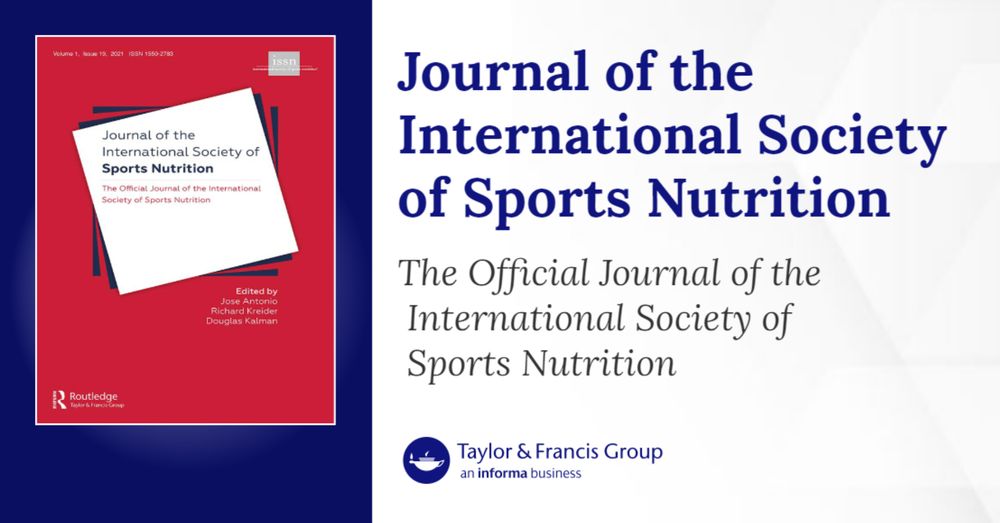
High-dose beta-alanine supplementation for two weeks did not enhance intermittent endurance or sprint performance in trained futsal players
This study aimed to investigate the effects of a high-dose beta-alanine (BA) supplementation on physical performance, blood lactate concentration, and ratings of perceived exertion (RPE) in trained...
www.tandfonline.com
September 27, 2025 at 1:19 PM
No ergogenic effect of high dose beta-alanine on futsal players. 12 g/d for 2 wks didn't show an effect on intermittent endurance test, sprint performance, blood lactate, or RPE.
www.tandfonline.com/doi/full/10....
www.tandfonline.com/doi/full/10....
No significant improvement in performance with acute L-#arginine and #citrulline malate supplementation in comparison to placebo in #CrossFit performance.
www.nature.com/articles/s41...
www.nature.com/articles/s41...

Acute effects of combined supplementation of L-arginine and citrulline malate on aerobic, anaerobic, and CrossFit exercise performance - Scientific Reports
Scientific Reports - Acute effects of combined supplementation of L-arginine and citrulline malate on aerobic, anaerobic, and CrossFit exercise performance
www.nature.com
September 27, 2025 at 1:14 PM
No significant improvement in performance with acute L-#arginine and #citrulline malate supplementation in comparison to placebo in #CrossFit performance.
www.nature.com/articles/s41...
www.nature.com/articles/s41...
Nice, interesting package influences us consumers. It's worth the time you need to check the back of the packaging to read the label. Claims are on the front label but claims remain claims and not all are true…
www.jandonline.org/article/S221...
www.jandonline.org/article/S221...
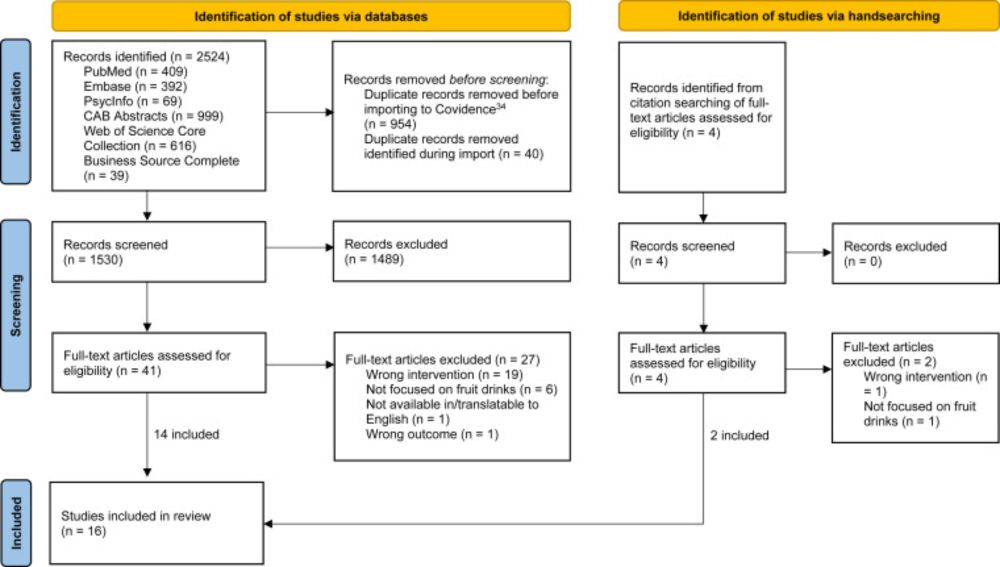
The Relationship Between Fruit Drink Front-of-Package Claims, Fruit Imagery, and Ingredient Disclosures and Consumer Perceptions, Intentions, and Behavior: A Systematic Review
Fruit drinks are the top source of added sugar in young children’s diets, increasing
their risk of chronic disease. It is unclear to what extent front-of-package marketing
and disclosures influence pa...
www.jandonline.org
September 18, 2025 at 1:59 PM
Nice, interesting package influences us consumers. It's worth the time you need to check the back of the packaging to read the label. Claims are on the front label but claims remain claims and not all are true…
www.jandonline.org/article/S221...
www.jandonline.org/article/S221...
Oh yes!
"Each member of the clinical management team plays a unique yet integral role in guiding the athlete through the phases of REDs identification, management, and recovery."
#reds #lea #athletes #energyavailability
econtent.hogrefe.com/doi/full/10....
"Each member of the clinical management team plays a unique yet integral role in guiding the athlete through the phases of REDs identification, management, and recovery."
#reds #lea #athletes #energyavailability
econtent.hogrefe.com/doi/full/10....
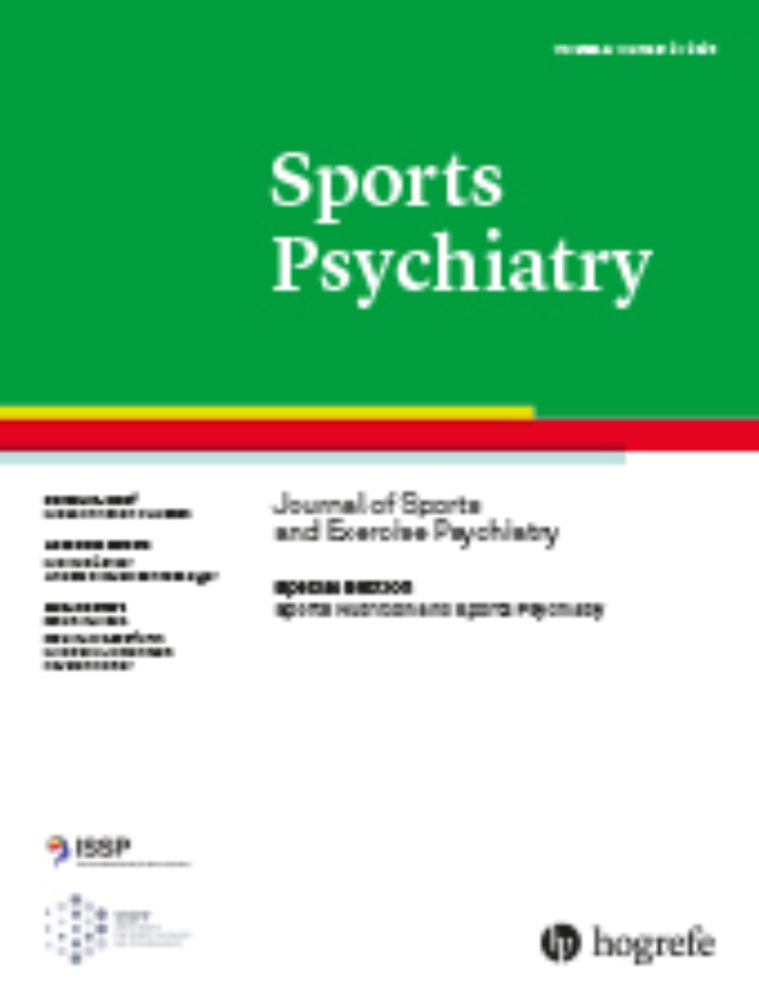
Responding to Relative Energy Deficiency in Sport (REDs): a multidisciplinary care pathway for safe return to sport | Sports Psychiatry
econtent.hogrefe.com
September 5, 2025 at 5:58 AM
Oh yes!
"Each member of the clinical management team plays a unique yet integral role in guiding the athlete through the phases of REDs identification, management, and recovery."
#reds #lea #athletes #energyavailability
econtent.hogrefe.com/doi/full/10....
"Each member of the clinical management team plays a unique yet integral role in guiding the athlete through the phases of REDs identification, management, and recovery."
#reds #lea #athletes #energyavailability
econtent.hogrefe.com/doi/full/10....
Centenarian athletes: The paradigm of healthy longevity?
#centenarian #exercise #longevity
www.sciencedirect.com/science/arti...
#centenarian #exercise #longevity
www.sciencedirect.com/science/arti...

September 1, 2025 at 4:09 PM
Centenarian athletes: The paradigm of healthy longevity?
#centenarian #exercise #longevity
www.sciencedirect.com/science/arti...
#centenarian #exercise #longevity
www.sciencedirect.com/science/arti...

August 30, 2025 at 2:56 PM
Gut and ageing…dysbiosis is often an issue. But there're ways to treat it and improve health and well-being.
#microbiome #ageing #health #nutrition
genomemedicine.biomedcentral.com/articles/10....
#microbiome #ageing #health #nutrition
genomemedicine.biomedcentral.com/articles/10....

Microbiome-based therapeutics towards healthier aging and longevity - Genome Medicine
The gut microbiome is our lifetime companion, regulating our health from birth throughout the lifespan. The gut microbiome composition changes continually with age, influencing both physiological and ...
genomemedicine.biomedcentral.com
August 30, 2025 at 10:05 AM
Gut and ageing…dysbiosis is often an issue. But there're ways to treat it and improve health and well-being.
#microbiome #ageing #health #nutrition
genomemedicine.biomedcentral.com/articles/10....
#microbiome #ageing #health #nutrition
genomemedicine.biomedcentral.com/articles/10....
Watts per kilogram - cycling and the lighter is better mindset. Vivid discussions.
velo.outsideonline.com/road/road-tr...
velo.outsideonline.com/road/road-tr...

August 30, 2025 at 9:02 AM
Watts per kilogram - cycling and the lighter is better mindset. Vivid discussions.
velo.outsideonline.com/road/road-tr...
velo.outsideonline.com/road/road-tr...
No effect of topical magnesium gel on recovery.
#magnesium #gel #recovery
pubmed.ncbi.nlm.nih.gov/40537122/
#magnesium #gel #recovery
pubmed.ncbi.nlm.nih.gov/40537122/

No Effect of Topical Application of a Commercial Magnesium Gel on Exercise Recovery in Active Individuals - PubMed
Oral magnesium supplementation can reduce muscle soreness and muscle damage markers after unaccustomed exercise. However, the effectiveness of topical magnesium applications remains unclear. This rand...
pubmed.ncbi.nlm.nih.gov
August 23, 2025 at 3:14 PM
No effect of topical magnesium gel on recovery.
#magnesium #gel #recovery
pubmed.ncbi.nlm.nih.gov/40537122/
#magnesium #gel #recovery
pubmed.ncbi.nlm.nih.gov/40537122/
Omega-3 supplementation for better cognitive function? More high quality research needed!!!
#omega3 #cognition #fishoil #supplements
www.nature.com/articles/s41...
#omega3 #cognition #fishoil #supplements
www.nature.com/articles/s41...

A systematic review and dose response meta analysis of Omega 3 supplementation on cognitive function - Scientific Reports
Scientific Reports - A systematic review and dose response meta analysis of Omega 3 supplementation on cognitive function
www.nature.com
August 23, 2025 at 1:55 PM
Omega-3 supplementation for better cognitive function? More high quality research needed!!!
#omega3 #cognition #fishoil #supplements
www.nature.com/articles/s41...
#omega3 #cognition #fishoil #supplements
www.nature.com/articles/s41...
Good hydration - a challenge for many!
Hydration status worsened and athletes dehydrated on day two. ❌
#hydration #athletes #drinkingprotocol #endurancesports
bmcsportsscimedrehabil.biomedcentral.com/articles/10....
Hydration status worsened and athletes dehydrated on day two. ❌
#hydration #athletes #drinkingprotocol #endurancesports
bmcsportsscimedrehabil.biomedcentral.com/articles/10....

Hypohydration is evident in elite orienteering athletes during a two-day race: a descriptive study - BMC Sports Science, Medicine and Rehabilitation
This study aimed to present changes in hydration status of orienteering athletes during a two-day race. Twenty elite male orienteers voluntarily participated in the study during a two-day race. Athlet...
bmcsportsscimedrehabil.biomedcentral.com
August 16, 2025 at 1:39 PM
Good hydration - a challenge for many!
Hydration status worsened and athletes dehydrated on day two. ❌
#hydration #athletes #drinkingprotocol #endurancesports
bmcsportsscimedrehabil.biomedcentral.com/articles/10....
Hydration status worsened and athletes dehydrated on day two. ❌
#hydration #athletes #drinkingprotocol #endurancesports
bmcsportsscimedrehabil.biomedcentral.com/articles/10....
Intermittent fasting to reduce inflammation? Not completely clear picture and more long-term studies needed.
#fasting #inflammation #health #nutrition
pubmed.ncbi.nlm.nih.gov/40805975/
#fasting #inflammation #health #nutrition
pubmed.ncbi.nlm.nih.gov/40805975/

The Effects of Intermittent Fasting on Inflammatory Markers in Adults: A Systematic Review and Pairwise and Network Meta-Analyses - PubMed
<span><b>Background:</b> Intermittent fasting (IF) can improve inflammatory status, but its effects may be dependent on the mode of fasting. <b>Objectives:</b> We performed a systematic review with pa...
pubmed.ncbi.nlm.nih.gov
August 16, 2025 at 1:34 PM
Intermittent fasting to reduce inflammation? Not completely clear picture and more long-term studies needed.
#fasting #inflammation #health #nutrition
pubmed.ncbi.nlm.nih.gov/40805975/
#fasting #inflammation #health #nutrition
pubmed.ncbi.nlm.nih.gov/40805975/
New motivation to add some exercise snacks to your day. Leaving the chair for a moment on office days has soooooo many benefits. New data for more evidence.
pubmed.ncbi.nlm.nih.gov/40781908/
pubmed.ncbi.nlm.nih.gov/40781908/

Successfully Reducing Sitting Time Can Improve Metabolic Flexibility - PubMed
Impaired metabolic flexibility (MetFlex; the ability to regulate substrate oxidation) and sedentary behavior are both linked to cardiometabolic diseases, but the relationship between the two is not fu...
pubmed.ncbi.nlm.nih.gov
August 16, 2025 at 1:28 PM
New motivation to add some exercise snacks to your day. Leaving the chair for a moment on office days has soooooo many benefits. New data for more evidence.
pubmed.ncbi.nlm.nih.gov/40781908/
pubmed.ncbi.nlm.nih.gov/40781908/
REDs screening protocol. A suggestion to prevent certain extremes that can trigger ED/DE.
#reds #cycling #thecyclistsalliance #health #femaleathlete
www.domestiquecycling.com/en/news/wome...
#reds #cycling #thecyclistsalliance #health #femaleathlete
www.domestiquecycling.com/en/news/wome...
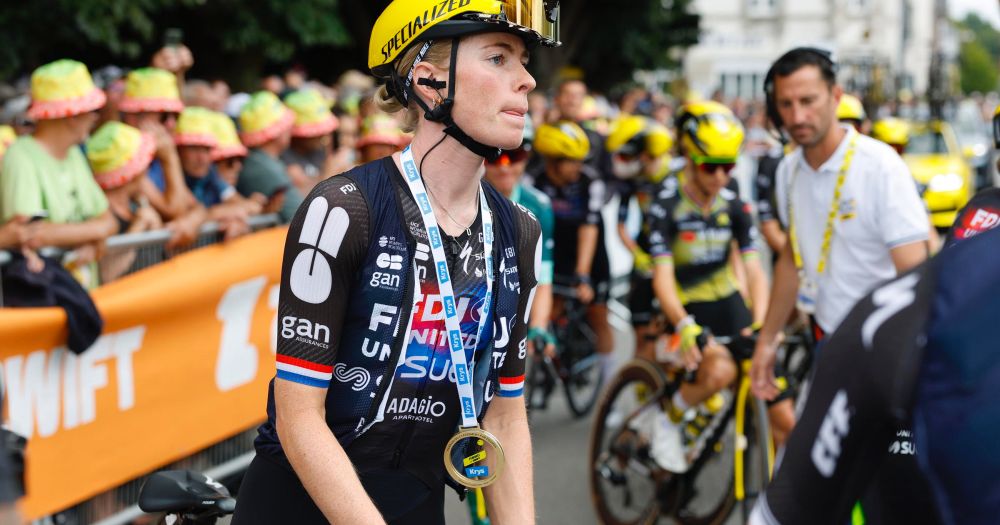
Women's cycling union calls for change as rider health debate intensifies
The Cyclists’ Alliance, the representative body for female professional cyclists, has issued a statement on rider health, calling for changes in how the…
www.domestiquecycling.com
August 14, 2025 at 2:35 PM
REDs screening protocol. A suggestion to prevent certain extremes that can trigger ED/DE.
#reds #cycling #thecyclistsalliance #health #femaleathlete
www.domestiquecycling.com/en/news/wome...
#reds #cycling #thecyclistsalliance #health #femaleathlete
www.domestiquecycling.com/en/news/wome...






